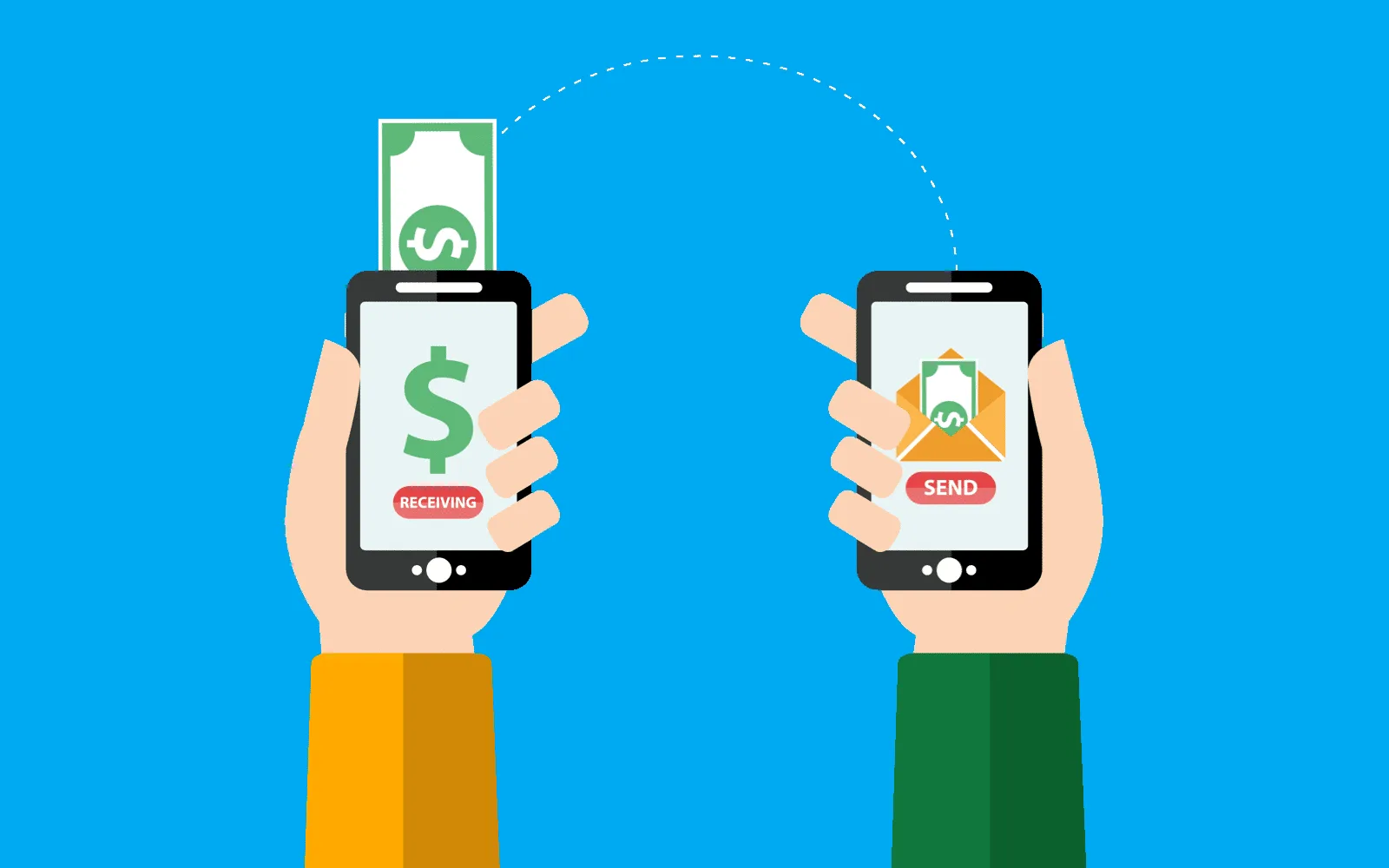A few years back, only banks were considered the safest sources to exchange money. But now modern technologies have changed the interests of the people. People prefer digital ways of exchanging money. They are the easiest and safest ways to pay money. A long list of digital payment apps is available. But the most widely used are P2P payment apps. P2P stands for peer-to-peer.

Think about a peer-to-peer payment app if you are a web/software developer and are thinking of launching a payment app that could make the exchange of money easier. According to a survey, more than 700 million people in the US prefer to use P2P apps instead of the physical exchange of money. This article will explain the fundamentals of making a sustainable and demanded product for a fintech marketplace.
Introduction of Peer-to-Peer (P2P) Payment App
P2P payment app plays the role of central bridge between bank account holders. The full form of P2P is a peer-to-peer payment app. This payment app helps people to transfer money from one bank account to another bank account through a mobile app in no time.
Peer-to-peer payment app enables users to make an easy, secure, and fast money transfer from one account to another account just by clicking on their Smart Phones. P2P payment app makes the life of bank users easier and saves them from the hustle of exchanging money physically. P2P payment apps have worldwide popularity due to their quick, easy, and user-friendly features.
P2P payment app has different business models, which are mentioned below.
Services of Mobile Manufacturers
This business model is the best option for the infrastructure payment model. This peer-to-peer payment app business model is primarily used in developed countries. This model enables the exchange of money between users of product ecosystems.
Examples
Examples of this P2P business model are Apple Pay, Google Pay, Samsung Pay, etc.
- Social Media Centric Services
This P2P business model is suitable for social media-centric companies. In this model, messaging apps of social media platforms are embedded with a payment function. Users can directly use these payment functions for transactions without being passing through strong authentication procedures.
Examples
Common examples of social media-centric services are Facebook Messenger, WeChat, Snapchat, etc.
- Bank-Centric Services
This peer-to-peer payment business model needs a bank for transactions. This model allows the customers to link their banks with P2P payment apps and make their transactions just by tapping on their smartphones.
Examples
The most common examples of this P2P business model are Zelle, Dwolla, PopMoney, etc.
- Stand-Alone Peer-to-Peer Services
These P2P services owe their mechanism for transferring money from one account to another account. This type of P2P business model provides a wallet to its users to store their funds before transferring them into bank accounts. This business model is widely used for making the exchange of money globally.
Examples
PayPal, Payoneer, Square Cash, and M-Pesa are the most common examples of standalone P2P services.
Introduction to Social+ Payment Apps
The Peer-to-Peer payment app is getting popular worldwide as it uses social engineering and social+ techniques to enhance customer engagement. Social+ apps are designed using the social+ concept. Social+ payment apps facilitate the customers with multiple engaging services at once.
Examples
The best example of social+ payment apps is Venmo. Venmo social+ payment app was introduced in 2009. It was designed by combining social engagement and a virtual wallet. Customers can link their bank account with the Venmo payment app. But the bank’s user who wants to link with Venmo must be located in his / her vicinity. Users can store their money in Venmo’s wallet. Later, they can make a safe and easy transaction of their funds. Customers can transfer money from one account to another account by using the Venmo payment app.
Benefits of Social+ Payment Apps
Here we will discuss the advantages of P2P Social+ payment apps. We will consider the Venmo social+ payment app for our discussion.
- Growth
Social+ payment apps get rapid growth. They use social networking techniques to enhance customer engagement with these payment apps.
- Retention
P2P social+ payment apps allow the users to interact with other users. It helps to build a community of users. This is the key rule behind the rapid success of social+ payment apps like Venmo.
- UGC (User-Generated Content)
Social+ apps allow users to share their own created content. It saves companies from creating user-friendly content.
- Personalized Customer Experience
Social+ apps provide a highly personalized user interface to their customers. This personalized customer experience saves businesses from marketing expenses while promising exciting business results.
Features of Social+ Payment App
Now we discuss some core features of social+ payment apps like Venmo.
- Account Setting
Social+ payment apps enable the users to set their accounts as per their desire. Users can choose a payment method of their ease.
- Multi-Tier Authentication Process
Social+ payment apps like Venmo save users from any type of data leakage by using a multi-tier authentication process.
- Integration with Contact List
If you want to develop a Peer-to-Peer payment app, you must add this feature to it. It allows users to scan their contact list and send money by just choosing their contacts.
- Money Transfer
Social+ payment apps provide an easy and quick way to transfer money from the app’s wallet to a bank account and vice versa.
- Linking Bank Accounts
These payment apps enable users to link their bank accounts with P2P payment apps. This makes the fund transfer procedure so handy and smooth.
- Share payments
Social+ payment apps facilitate the users by providing them with a “share payment” option. Users can use this option to share money with anyone.
- Data Encryption
Social+ payment apps ensure full-fledged data security to their consumers. These apps use standard encryption methods to save the sensitive data of customers.
Expenses for developing a Social+ P2P payment App
The expenses for developing a social+ P2P payment app depend upon certain factors:
- Features you want to add to the P2P payment app
- The structure you want to adopt for developing a P2P payment app
The cost for developing a P2P app will increase as you increase the features during P2P payment app development. But in general, it can vary from $120000 to $150000.
Summary
Peer-to-Peer payment apps provide secure and quick money transfers from one account to another. P2P payment apps have different business models that create various structures. These apps are designed based on social+ and users engagement techniques. That enhances the popularity level of P2P apps. Social+ techniques of P2P payment apps enable the users to communicate with other users and make a community with them.
Social+ Peer-to-Peer payment apps include:
- The features of data encryption.
- Sharing payment.
- Split bills.
- Linkage of bank accounts with these apps.
Venmo is the best example of a social+ P2P payment app. Venmo allows an easy and safest process for money transfer from one bank account to another.



